Sewing may seem like a daunting task for beginners, but with the right guidance and a bit of practice, you can achieve stunning results.
One essential skill every aspiring seamstress should add to their repertoire is sewing an invisible zipper. Unlike traditional zippers, invisible zippers blend seamlessly into your garments, providing a clean and polished finish.
In this comprehensive guide, we will discuss how to sew an invisible zipper like a pro. Whether you’re a novice looking to enhance your sewing skills or an experienced sewist seeking to perfect your technique, this tutorial will prove invaluable.
By the end of this tutorial, you’ll not only be able to sew invisible zippers with confidence but also elevate the quality and professionalism of your sewing projects. So, let’s dive in and discover the secrets to achieving that flawless, concealed zipper look!
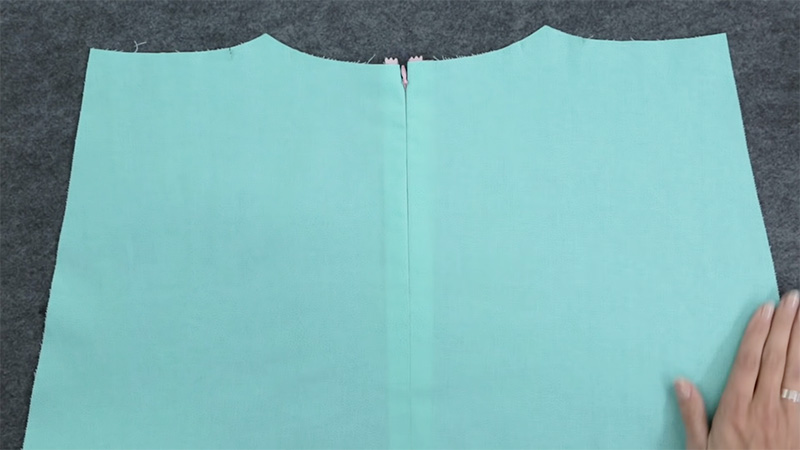
How to Sew an Invisible Zipper? 8 Steps
Sewing an invisible zipper can seem intimidating, but with the right technique and some practice, you can achieve a clean and polished look. In this step-by-step guide, I’ll walk you through the process of sewing an invisible zipper into your garment. Follow these steps to master this technique:
Materials you’ll need
Fabric with a seam to which you want to add the zipper. An invisible zipper of the appropriate length for your seam. An invisible zipper foot for your sewing machine. Regular sewing supplies: thread, pins, scissors, and a seam ripper.
Step 1: Prepare the fabric
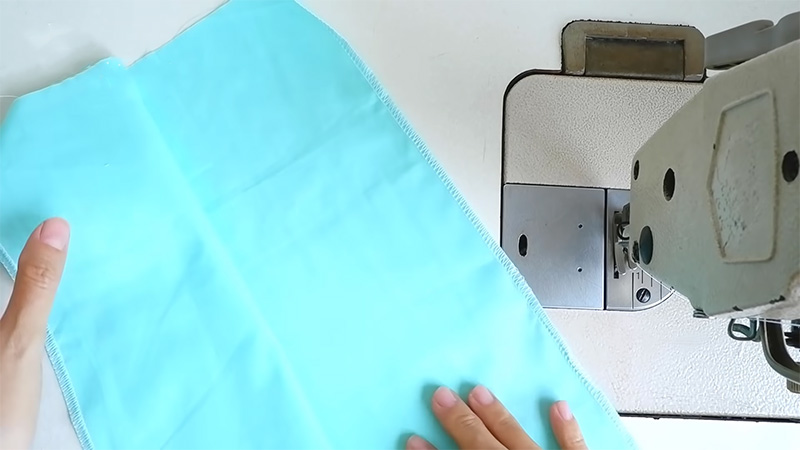
Lay your fabric pieces right sides together along the seam where you want to insert the zipper. Pin the seam in place, leaving an area about the length of your zipper open at the top.
Step 2: Open the zipper
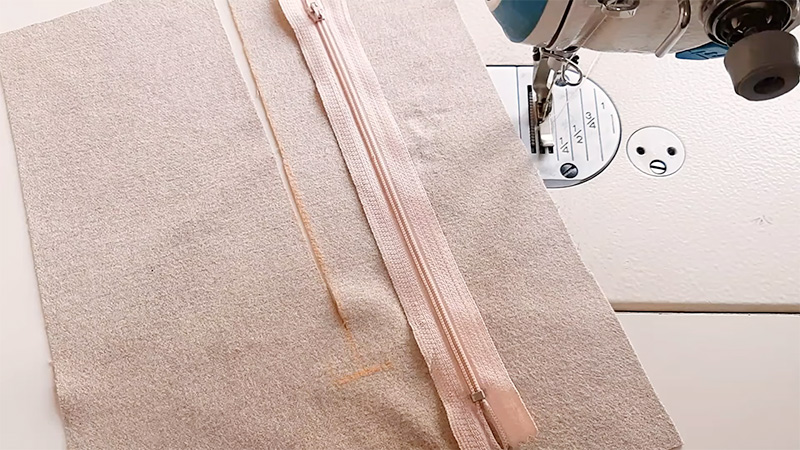
Press the seam open with an iron to create a flat surface for attaching the zipper. Before you start sewing, open the zipper and press it flat with an iron. This will make it easier to work with and ensure that the teeth are properly aligned.
Step 3: Install the invisible zipper foot
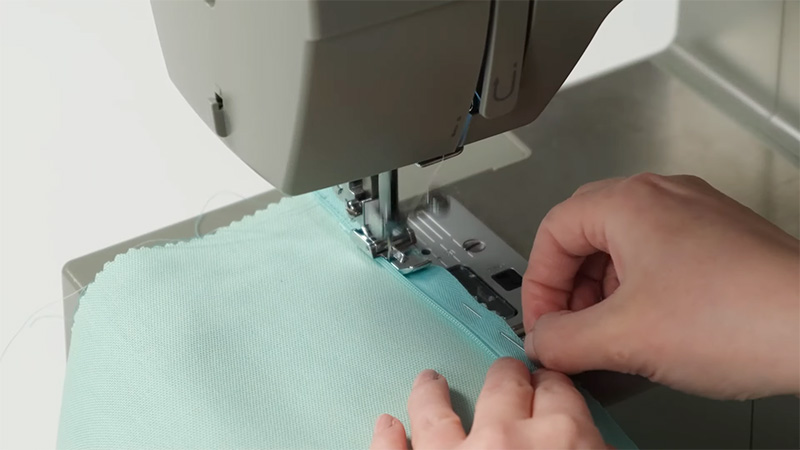
Attach the invisible zipper foot to your sewing machine. This specialized foot will allow you to sew close to the zipper teeth without catching them.
On the wrong side of the fabric, mark the placement of your zipper with a fabric marker or chalk. Make a straight line down the center of the seam where the zipper will be inserted.
Step 4: Start sewing the first side
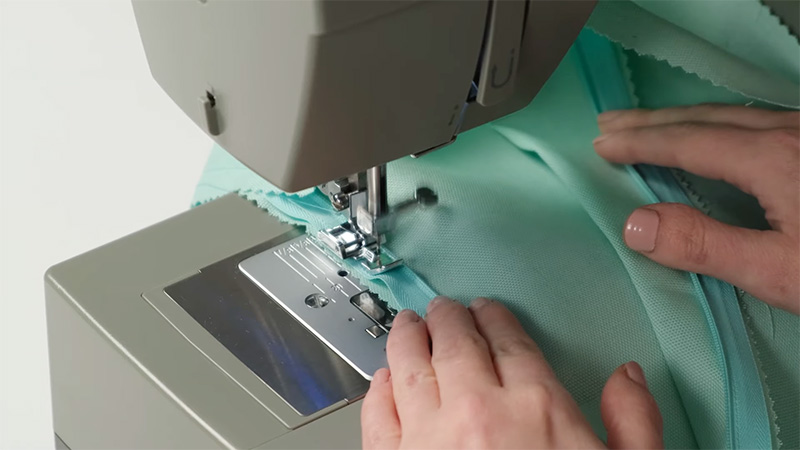
Place the fabric under the sewing machine with the right side facing up. Position the zipper face down along the marked line, aligning the top of the zipper tape with the top of the fabric.
Lower the zipper foot so that it straddles the zipper teeth without actually touching them. Starting from the top, sew the first side of the zipper tape down the fabric, keeping your stitches close to the teeth. Sew as far as you can, and then backstitch to secure the end.
Step 5: Sew the other side of the zipper
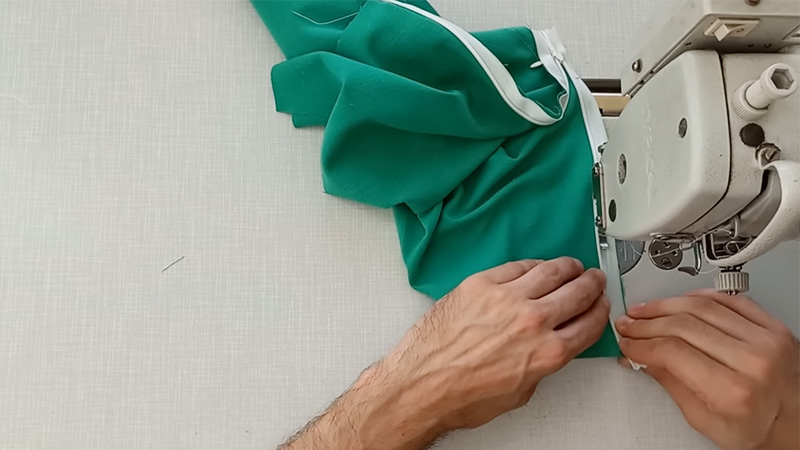
Close the zipper to ensure that the fabric aligns properly. Flip the fabric to the other side of the seam. Position the remaining side of the zipper face down along the marked line on this side.
Again, lower the zipper foot and sew this side of the zipper tape, keeping your stitches close to the teeth. Backstitch at the end to secure it.
Step 6: Check your work
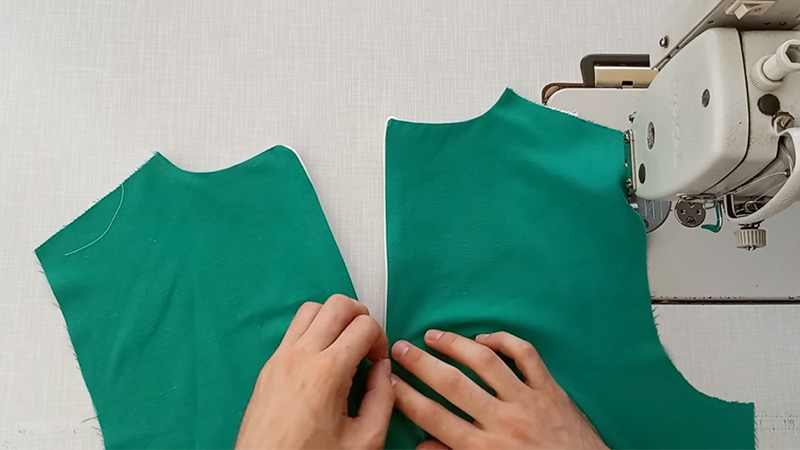
Unzip the zipper to make sure it functions smoothly and that both sides of the fabric align perfectly. If there are any gaps or uneven stitching, use a seam ripper to carefully remove the problem areas and re-sew them.
Step 7: Secure the bottom of the zipper
At the bottom of the zipper, you’ll have a small gap where the two sides of the zipper tape meet. Fold the tape ends under and sew across them to secure the bottom of the zipper.
Now that your zipper is securely in place, finish sewing the rest of the seam below the zipper. Make sure to backstitch at the beginning and end to lock your stitches in place.
Step 8: Press the seam
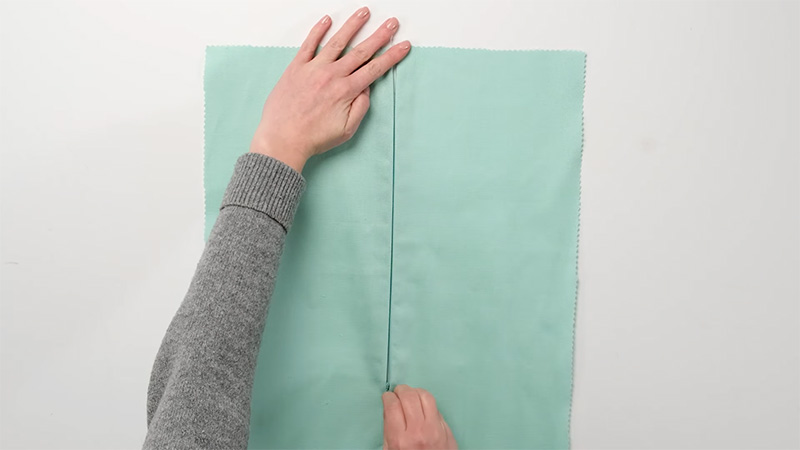
Finally, press the entire seam open with an iron. This will give your garment a polished and professional finish. Congratulations! You’ve successfully sewn an invisible zipper into your garment.
With practice, you’ll become more confident in your zipper insertion skills, and it will become a seamless part of your sewing repertoire.
Remember that practice makes perfect, so don’t be discouraged if your first attempt isn’t flawless. Keep refining your technique, and soon you’ll be adding invisible zippers effortlessly to your sewing projects.
What Are the Uses of an Invisible Zipper?
Invisible zippers are a versatile and popular choice for various sewing projects, offering a clean and discreet closure that blends seamlessly with the fabric. Let’s explore the many uses of invisible zippers in sewing.
Garments and Formalwear
Invisible zippers are commonly used in clothing, especially in dresses, skirts, blouses, and pants. They provide a sleek and polished finish, making them ideal for formal attire, evening gowns, and other garments where a hidden closure is desired.
Invisible zippers are a must-have for formalwear like prom dresses, wedding gowns, and tuxedos. They create a seamless look, ensuring that the focus remains on the design and fabric of the garment, rather than the closure.
Bridal Wear and Costumes
Bridal gowns often feature invisible zippers because they maintain the elegance and beauty of the dress without distracting from intricate details, lacework, or beadwork.
Whether for theater productions or cosplay, invisible zippers can be incorporated into costumes to maintain a polished appearance while allowing for easy dressing and undressing.
Blouses, Shirts, and Skirts
Invisible zippers can be used in blouses and shirts, adding a touch of sophistication to everyday or office wear. They’re especially useful for lightweight fabrics where other types of zippers might be too bulky.
Invisible zippers are perfect for skirts and pants, giving a streamlined look without visible hardware. They work well with both casual and formal styles.
Cushion Covers and Home Decor
For decorative cushions and pillow covers, invisible zippers can be discreetly placed along the edges, allowing for easy removal and cleaning without compromising the design.
Invisible zippers are used in various home decor projects, such as curtains, duvet covers, and slipcovers. They maintain a seamless appearance while providing access for washing or changing.
Bags and Purses
In bag-making and purse construction, invisible zippers are employed to create pockets or compartments without the zipper teeth disrupting the aesthetics.
Invisible zippers can be used in children’s clothing, ensuring a comfortable and non-scratchy closure while maintaining a neat appearance.
Lingerie and Upholstery
Delicate lingerie pieces often use invisible zippers for a smooth and discreet closure that enhances comfort and style.
In upholstery projects, invisible zippers can be added to seat cushions or sofa covers, allowing for easy removal for cleaning or replacement.
Accessories and Formalwear Alterations
Accessories like clutches, wallets, and cosmetic bags can benefit from invisible zippers, creating a sleek and professional look.
Invisible zippers are invaluable for tailors and seamstresses when altering formal garments. They allow for adjustments while preserving the garment’s original appearance.
Pet Clothing and Quilting
For pet owners who like to dress up their furry friends, invisible zippers can be used in pet clothing, ensuring both style and functionality.
In quilting projects, invisible zippers can be used to create hidden pockets for storage, or they can be employed to join sections of a quilt with a concealed seam.
Dancewear and Sleepwear
Dance costumes, leotards, and practice wear often feature invisible zippers, as they provide a comfortable and unobtrusive closure for dancers. For pajamas, nightgowns, and loungewear, invisible zippers offer a comfortable closure option that won’t disturb your rest.
Maternity Clothing and Swimwear
Maternity dresses and tops can incorporate invisible zippers, allowing for expansion as the pregnancy progresses while maintaining a stylish appearance. In swimwear design, invisible zippers can be used for one-piece swimsuits and cover-ups, ensuring a snug yet seamless fit.
In summary, invisible zippers are a versatile and elegant choice for a wide range of sewing projects, from clothing and accessories to home decor and beyond.
Their discreet appearance and smooth functionality make them a favorite among sewers and designers looking to achieve a polished and professional finish.
Whether you’re creating formalwear, everyday clothing, or home furnishings, invisible zippers can enhance the overall look and functionality of your projects.
FAQs
What’s the difference between an invisible zipper and a regular zipper?
An invisible zipper, also known as a concealed zipper, is designed to be discreet and blend seamlessly with the fabric, making it almost invisible when closed. Regular zippers, on the other hand, have visible teeth and are often used for more utilitarian.
Can I sew an invisible zipper by hand?
Yes, you can sew an invisible zipper by hand using a slip stitch or ladder stitch. However, it’s more common to use a sewing machine with a specialized invisible zipper foot for precision and efficiency.
What length of invisible zipper should I use for my project?
To determine the zipper length needed, measure the opening where you plan to insert the zipper. Choose a zipper that is slightly longer than the opening to ensure it extends past the seam. You can trim the excess later if necessary.
How do I prevent the fabric from puckering when sewing an invisible zipper?
To prevent puckering, use a stabilizer like tear-away or water-soluble stabilizer along the zipper seam. Additionally, be sure to press the fabric flat before sewing, and use the correct tension and stitch length on your sewing machine.
What do I do if my invisible zipper gets stuck?
If your zipper gets stuck, first try gently wiggling the slider back and forth to realign the teeth. If that doesn’t work, carefully use a seam ripper to open the seam above the zipper and assess the issue.
It may be a problem with the zipper teeth or the fabric caught in the slider.
Conclusion
Congratulations! You’ve now learned the art of sewing an invisible zipper. This invaluable skill opens up a world of possibilities in your sewing projects, allowing you to create garments and accessories with a polished, seamless finish.
Remember, practice makes perfect, so don’t be discouraged if your first attempts aren’t flawless. As you continue to hone your sewing skills, you’ll find that invisible zippers become second nature, and you’ll wonder how you ever managed without them.
Whether you’re crafting elegant dresses, stylish skirts, or even cushion covers, the clean and concealed look of an invisible zipper will elevate your creations to a professional level.
So, keep those needles and threads ready, and keep exploring the wonderful world of sewing. Your newfound expertise in sewing invisible zippers will undoubtedly enhance your work.
Leave a Reply